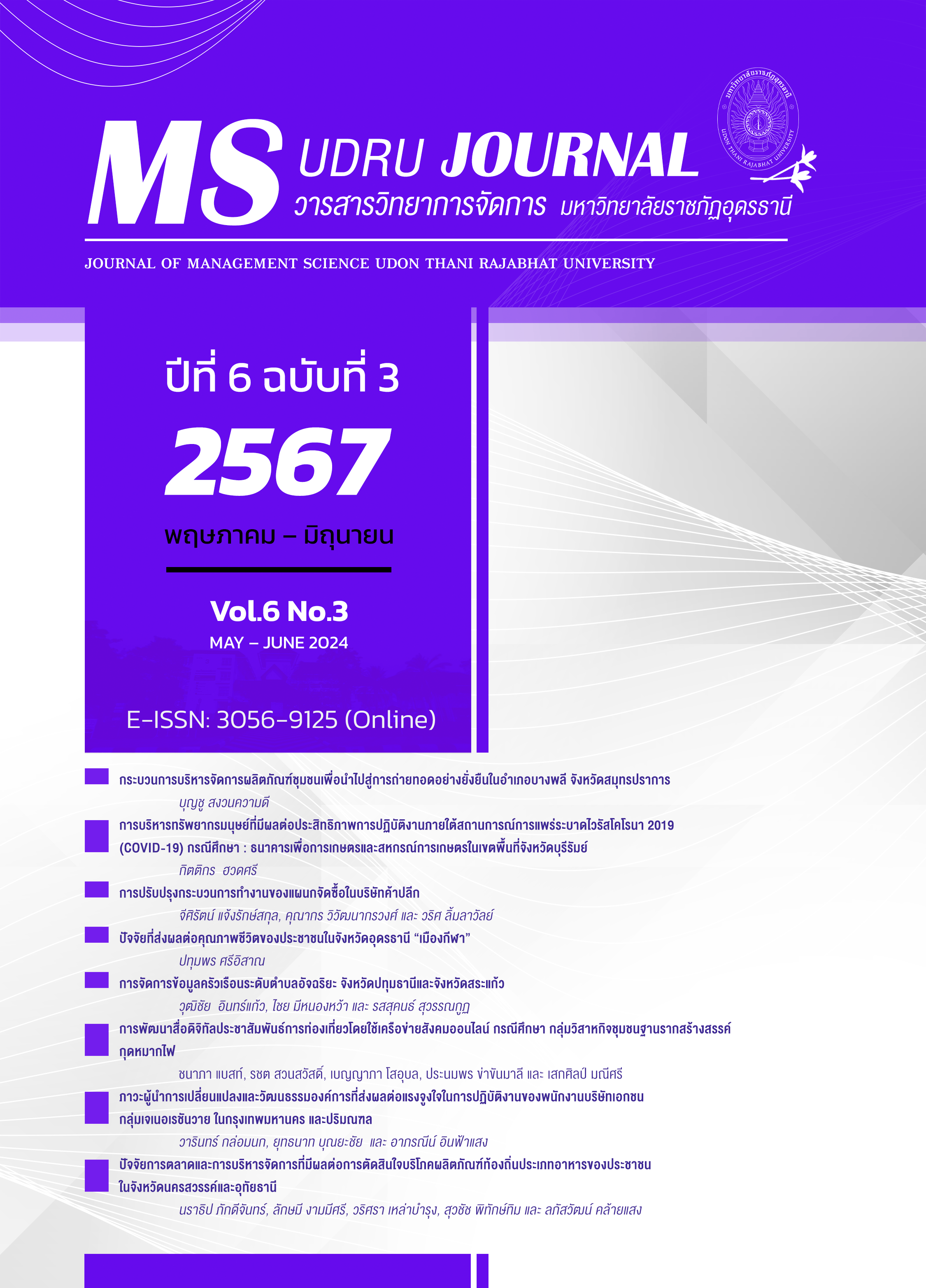IMPROVEMENT IN THE WORKING PROCESS OF PURCHASING DEPARTMENT IN A RETAILER COMPANY
Main Article Content
Abstract
This research is a study to improve the work process of the purchasing department. Retail Company Case Study who faced the problem of operating processes that took a long time There are complicated steps. It takes quite a long time to order until receiving the product or service. This research is primarily composed of three objectives. Firstly, it is to study the fundamental data of problem circumstance in the working process of purchasing department. Secondly, it is to reduce wastes in the purchasing department’s working procedure. Thirdly, it is to compare between pre and post improvement based on the work study by means of the flow process chart for data record. In this case, an analysis of the value- and non-value-added activity (or VA and NVA, respectively) on each activity was employed for improving in the matter of waste reduction with respect to the principle of ECRS (standing for Eliminate, Combine, Rearrange and Simplify). There were totally existing 46 activities, which 26 and 20 of them were VA and NVA, respectively. Also, the total time of all activities was 16 days and 780 minutes. After improvement by ECRS, results demonstrate that a number of activities are decreased from 46 to 44, reduction of two (or 4.34%). In the meantime, the total time is dropped from 16 days and 780 minutes to 11 days and 680 minutes, reduction of 5 days and 100 minutes (or 30.08%).
Article Details

This work is licensed under a Creative Commons Attribution-NonCommercial-NoDerivatives 4.0 International License.
บทความที่ได้รับการตีพิมพ์เป็นลิขสิทธิ์ของคณะวิทยาการจัดการ มหาวิทยาลัยราชภัฏอุดรธานี
ข้อความที่ปรากฏในบทความแต่ละเรื่องในวารสารวิชาการเล่มนี้ ไม่ใช่ความคิดเห็นและความรับผิดชอบของผู้จัดทำ บรรณาธิการ กองบรรณาธิการ และคณะวิทยาการจัดการ มหาวิทยาลัยราชภัฏอุดรธานี ความรับผิดชอบด้านเนื้อหาและการตรวจร่างบทความแต่ละเรื่องเป็นความคิดเห็นของผู้เขียนบทความแต่ละท่าน
References
กิตติชัย อธิกุลรัตน์. (2561). การศึกษาเวลามาตรฐานการติดตั้งแม่พิมพ์ กรณีศึกษา: บริษัทผลิตถุงพลาสติก. วารสารวิศวกรรมศาสตร์ ราชมงคลธัญบุรี, 16(1), 77-90.
คำนาย อภิปรัชญาสกุล. (2556). การจัดการคลังสินค้า และการกระจายสินค้า. กรุงเทพฯ: โฟกัสมีเดียแอนด์พับลิชชิ่ง.
จำลักษณ์ ขุนพลแก้ว. (2546). หลักการเพิ่มผลผลิต (Basis productivity improvement) (ครั้งที่ 3). กรุงเทพฯ: สถาบันเพิ่มผลผลิตแห่งชาติ สำนักพิมพ์โรงพิมพ์ประชาชน.
ประเสริฐ อัครประถมพงศ์. (2554). การลดความสูญเปล่าหลักการ ECRS. สืบค้น ตุลาคม 10, 2565 จาก https://cpico.wordpress.com/2009/11/29
พงศ์พัฒน์ เพ็ชรรุ่งเรือง. (2557). การบริหารผลิตภาพ. กรุงเทพฯ: บัณฑิตวิทยาลัย สาขาวิศวกรรมศาสตร์ มหาวิทยาลัยสยาม.
วรรณี ชลนภาสถิต. (2554). การจัดการวัสดุและการจัดซื้อ หน่วยที่ 5 การจัดหาวัสดุ. นนทบุรี: มหาวิทยาลัยสุโขทัยธรรมาธิราช.
รัชต์วรรณ กาญจนปัญญาคม. (2552). การศึกษางานอุตสาหกรรม. กรุงเทพฯ: ท้อป.
ศิรัตน์ แจ้งรักษ์สกุล, ผ่องใส เพ็ชรรักษ์, รชฏ ขำบุญ, กิตติชัย อธิกุลรัตน์ (2564). การเพิ่มผลิตภาพในสายการผลิตสายไฟในรถยนต์. วารสารวิชาการวิทยาศาสตร์และเทคโนโลยี มหาวิทยาลัยราชภัฏนครสวรรค์, 17, 87-101.
องุ่น สังขพงศ์ และสถาพร ทองคำ. (2556). การเพิ่มผลผลิตของสายการผลิตกุ้งไม่มีหัวแช่แข็งในอุตสาหกรรมแปรรูปสัตว์น้ำ. สงขลา: มหาวิทยาลัยสงขลานครินทร์.
อดุลย์ จาตุรงคกุล และพิมพ์เดือน จาตุรงคกุล. (2552). การจัดซื้อ. กรุงเทพฯ: มหาวิทยาลัยธรรมศาสตร์.
อรุณ บริรักษ์. (2550). การบริหารงานจัดซื้อในประเทศไทย. กรุงเทพมหานคร: ไอ ที แอล เทรด มีเดีย.
Shostack, G. L. (1984). Designing services that deliver. Harvard Business Review, 62(1), 133-139.
Kasidit. S. & Chusak. S. (2007). Productivity Improvement with Line Balancing Technique by Genetic Algorithm. Proceeding of 7th National Conference of Industrial Engineering Network. (IE Network), Petchaburi. 685-692.
Kurokawa, Y. (2010). M&A for Value Creation in Japan (6th ed.). Singapore: World Scientific.
Phiphop, L. (2005). Production Planning and Control. Bangkok: Technology Promotion Association (Thailand-Japan) Press.
Ratchawan, K., & Neausom, T. (1995). Motion and Time Study. Bangkok: Physic Center Press.
Wichai, C., & Chaleormpol, B. (2008). Application of production line balancing technique for productivity with electronic part assembly industry. KKU Research Journal, 13(8), 969-980.

